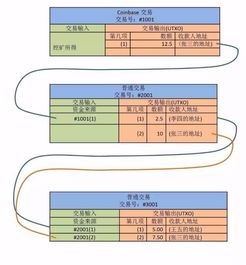In the everevolving landscape of cryptocurrency, Bitcoin continues to dominate as the foremost decentralized digital currency. Over time, various mechanisms have emerged to hold and manage Bitcoin holdings, catering to different needs and preferences of investors. Let's delve into some of the innovative holding mechanisms that have gained traction in the Bitcoin ecosystem:
Hardware wallets offer a secure offline storage solution for Bitcoin. These physical devices store the user's private keys offline, providing protection against online threats such as hacking and malware. Popular hardware wallets like Ledger and Trezor have gained widespread adoption due to their robust security features and ease of use.
Multisig wallets require multiple private keys to authorize a Bitcoin transaction, adding an extra layer of security. For instance, a 2of3 multisig wallet might require two out of three authorized parties to sign off on a transaction before it can be executed. This mechanism is particularly useful for businesses and organizations that require shared control over funds.

Several platforms offer Bitcoin savings accounts that allow users to earn interest on their Bitcoin holdings. These accounts typically operate on the principle of lending out deposited Bitcoin to borrowers in exchange for interest payments. While this mechanism can provide a passive income stream, users should carefully assess the risks associated with lending their Bitcoin to third parties.
Staking involves actively participating in the network's consensus mechanism by locking up a certain amount of Bitcoin as collateral. In return for staking their coins, participants may receive rewards in the form of additional Bitcoin. This mechanism is commonly associated with proofofstake (PoS) cryptocurrencies but is also being explored in the context of Bitcoin through initiatives like the Liquid Network.
Exchangetraded funds (ETFs) and funds allow investors to gain exposure to Bitcoin without directly holding the underlying asset. These investment vehicles pool together funds from multiple investors and allocate them to Bitcoin, offering diversification and liquidity benefits. While Bitcoin ETFs have yet to gain widespread regulatory approval in all jurisdictions, they present a convenient option for traditional investors looking to enter the cryptocurrency market.
Custodial services are offered by thirdparty providers who manage Bitcoin holdings on behalf of their clients. These services often cater to institutional investors and highnetworth individuals who seek professional asset management and security solutions. While custodial services offer convenience and expertise, users must trust the custodian to safeguard their funds against theft and loss.
DeFi platforms built on blockchain technology offer innovative ways to hold and interact with Bitcoin. Through protocols like Wrapped Bitcoin (WBTC) and RenBTC, users can tokenize their Bitcoin holdings and access a wide range of decentralized financial services such as lending, borrowing, and trading within the Ethereum ecosystem. However, users should exercise caution and perform due diligence when engaging with DeFi platforms, as they are susceptible to smart contract bugs and vulnerabilities.
The landscape of Bitcoin holding mechanisms continues to evolve, driven by advancements in technology and the growing demands of investors. Whether it's through hardware wallets, multisig solutions, staking, or DeFi platforms, individuals and institutions now have a diverse array of options to securely manage their Bitcoin holdings while participating in the broader cryptocurrency ecosystem. As the industry matures, it's essential for users to stay informed about the latest developments and choose holding mechanisms that align with their risk tolerance and investment objectives.
This comprehensive overview provides insights into various innovative mechanisms for holding Bitcoin, catering to a diverse range of investor needs and preferences in today's dynamic cryptocurrency landscape.
版权声明:本文为 “联成科技技术有限公司” 原创文章,转载请附上原文出处链接及本声明;

